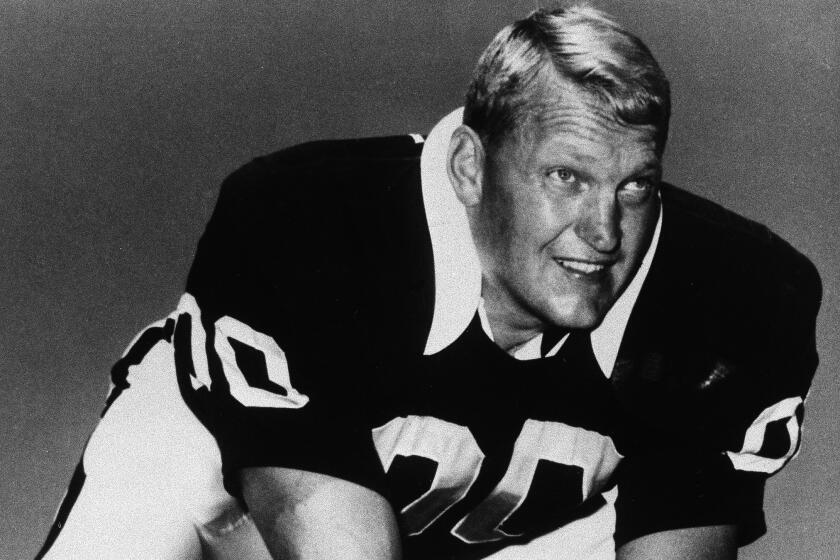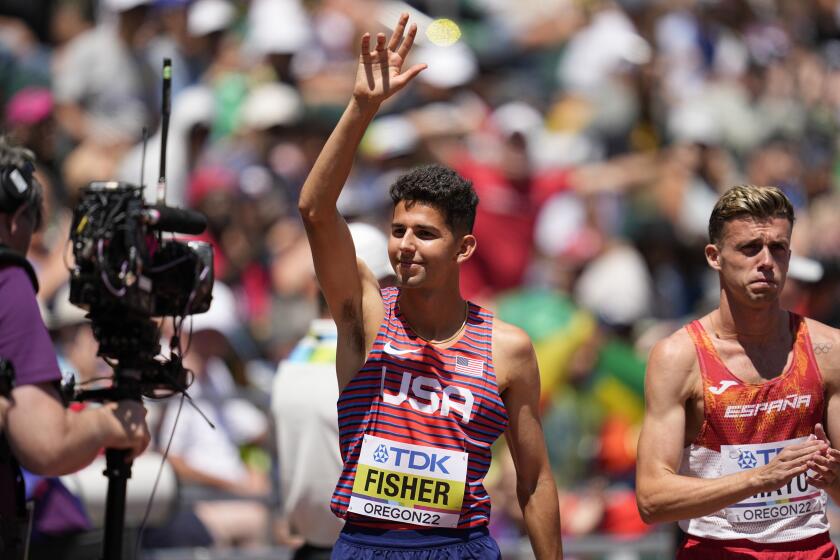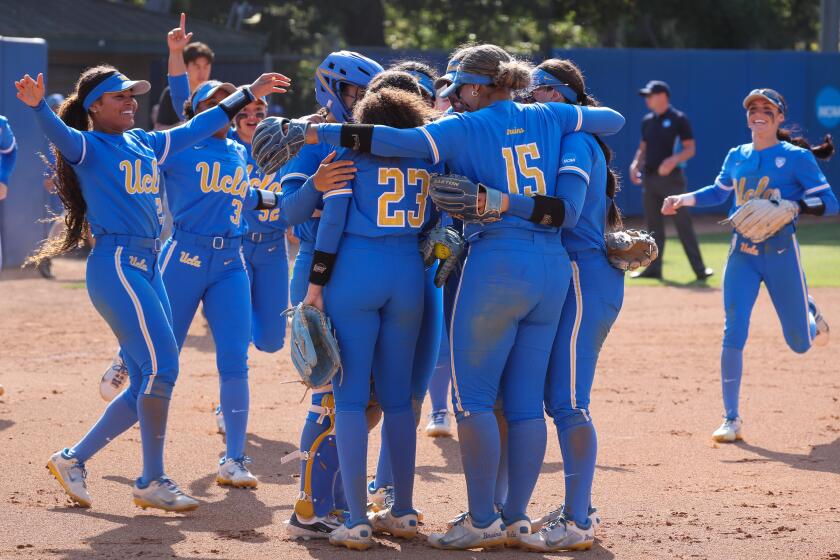Oft-Injured Pitcher Trying Another Comeback
The sounds coming from the bullpen were hard to believe.
Bret Saberhagen’s first pitch from a mound in six months landed with a resounding “thwack!” in the catcher’s mitt. Boston pitching coach Joe Kerrigan unleashed a hearty “Woo hoo!” as he caught the ball.
“That’s amazing,” Kerrigan said. “Didn’t have to move at all. When he pitches, it’s like sitting in a rocking chair catching.”
How could a 36-year-old pitcher whose right shoulder was reconstructed twice in four years throw so well, so early in spring training?
Why would an athlete with so much success, winning the first of his two Cy Young awards at age 21 and becoming World Series MVP with Kansas City that same season in 1985, work so hard for more?
“I love the game,” Saberhagen said. “This is only a game that you can do for a certain period of time at this level so you go out and enjoy it while you can and try to win rings.”
He didn’t pitch for the Red Sox at all last season, and now he’s talking about returning to the rotation, perhaps early in the season.
“Yeah, I’ll be there if my arm’s right,” he said, “and so far it’s been good.”
There are no guarantees his shoulder will hold up, but, if Saberhagen doesn’t make it back, it won’t be for lack of effort.
He was 14-4 with the New York Mets in 1994, but disaster struck the following August with Colorado. He threw a ball in practice and “felt something like a bottle shatter in my shoulder.”
Arthroscopic surgery didn’t work, so in May 1996, when Saberhagen had his first reconstruction, Colorado general manager Bob Gebhard said: “In 32 years of professional baseball, I have never seen an athlete work any harder or dedicate more time trying to make a comeback from a serious injury.”
Nearly five years later, Boston catcher Scott Hatteberg had the same view: “He’s written the book on rehab. He’s worked as hard as I’ve ever seen a guy work.”
Saberhagen missed the entire 1996 season and went nearly 22 months between major-league appearances before making his first start for Boston on Aug. 22, 1997.
He was healthy most of the next two seasons, going 15-8 in 1998 and 10-6 in 1999. It didn’t last.
The next reconstruction came on March 19, 2000, to repair a rotator cuff that was almost completely torn. Just four months later, he made his first rehabilitation start.
It was too soon.
And now, in what he jokingly describes as “Custer’s Last Stand,” he’s practicing patience.
“If my shoulder’s not allowing me to pitch this year, there’s no sense in going any further,” Saberhagen said. “That’s the reasoning for taking it through the right channels and taking our time.”
He plays long toss six days a week, lifts weights regularly and does extra running. His arm felt good enough after he threw 25 pitches, all fastballs, on Tuesday to throw another 30 in the bullpen on Thursday.
“It felt great,” he said.
Strangely, a big hurdle for a pitcher who had so much success on the mound is to get used to throwing off it again. Different muscles are at work than those he uses throwing on a flat surface.
“I’m not worried about it by any means, but it’s a new exercise,” he said.
He’s working on getting comfortable and building arm strength and thinks he’s too far behind other pitchers to be on the opening-day roster.
But another weapon--his pinpoint control--never left even though he missed two entire seasons in the last five years.
“The guy just throws strikes in his sleep,” Hatteberg said.
In 1,980 1/3 innings, Saberhagen has walked only 381 batters, an average of 1.7 per nine innings. On Tuesday, he didn’t miss many pitches.
“He was outstanding from the first pitch to the last,” Kerrigan said. “Out of the 25 pitches he threw, he probably hit his spots dead-on 20 times. That shows you what a world-class athlete Bret Saberhagen is.”
Saberhagen said the difference between his pain-free pitching now and the way he felt a year ago is “day and night.” But he’s maintained a realistic perspective.
“I’ve come to terms with it,” he said. “I’m very happy with the way things have gone throughout my career. I’ve achieved a lot.”
His teammates respect what he’s gone through and he remains an important clubhouse presence, taking a leadership role even though he hasn’t played much.
At times, though, frustration, set in and he thought of giving up. Friends helped him past that.
“The magnitude of the injury that he had (in 1995) is beyond anything I’ve ever heard, but never did he have to be talked off the ledge,” said friend David Cone, a teammate in Kansas City, New York and now Boston. “He’s a type of guy that’s not going to give in, not just yet.”
Kerrigan thinks Saberhagen’s arm is as strong as it’s been in the past four years. Cone has talked to Saberhagen about pitching in the same rotation in a pennant race.
Hatteberg says if Saberhagen falls short, “he’s going to have no regrets, because he’s given it absolutely everything he could.”
But Saberhagen doesn’t focus on failing. He has too much work to do to worry about that.
“I’m not over the hill yet,” he said. “I still feel like I’ve got a lot of bullets left in my arm. We’ll see what happens.”
More to Read
Get our high school sports newsletter
Prep Rally is devoted to the SoCal high school sports experience, bringing you scores, stories and a behind-the-scenes look at what makes prep sports so popular.
You may occasionally receive promotional content from the Los Angeles Times.






